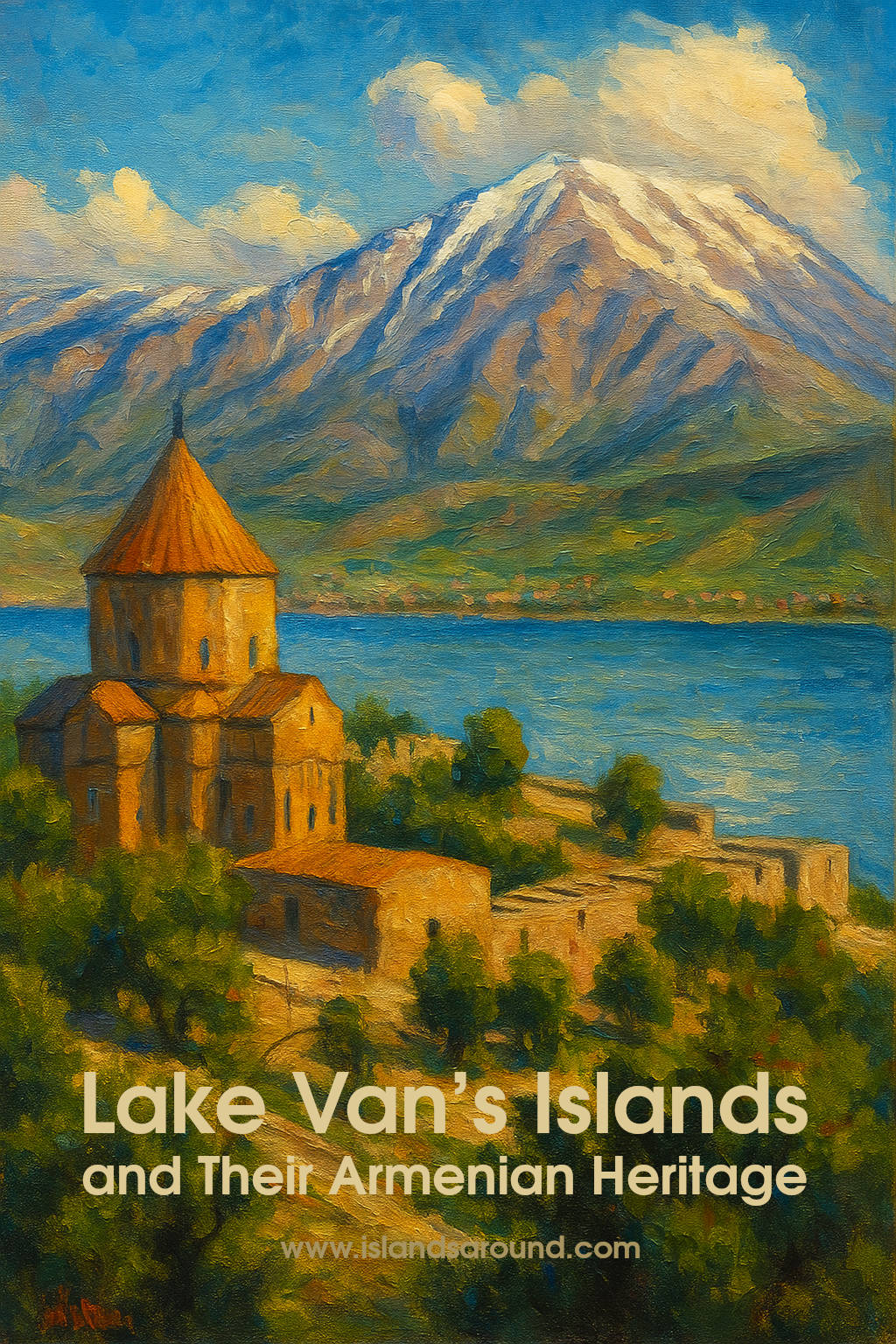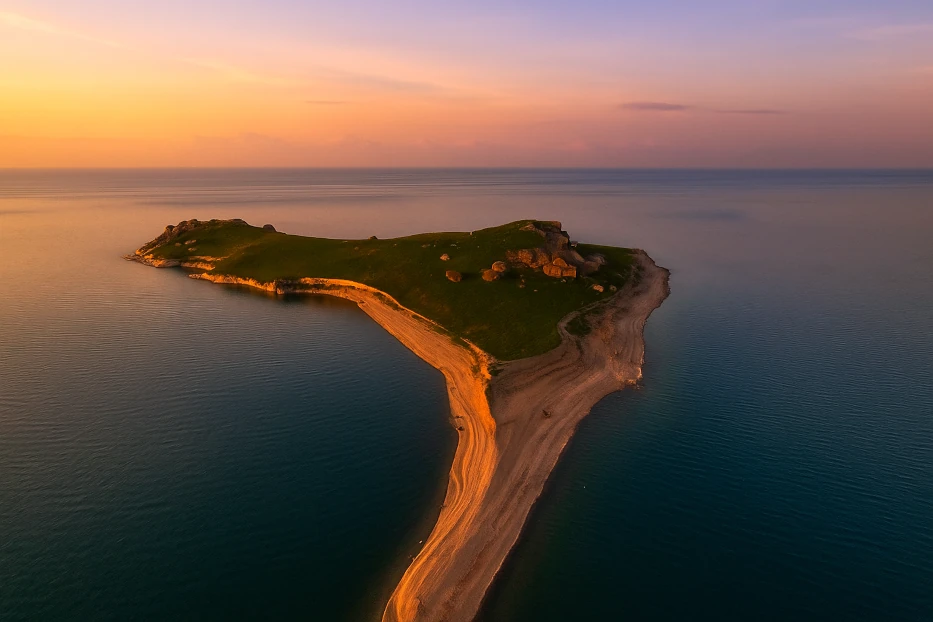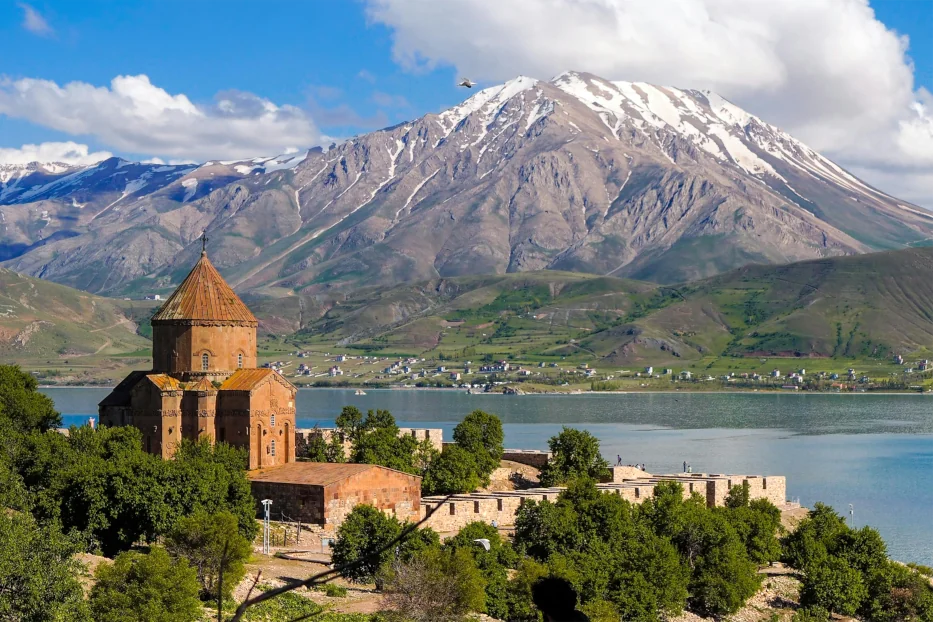Just southwest of Armenia’s current border, Lake Van—the largest lake in present-day Turkey—was once central to Armenian life.
In the Middle Ages, it featured seven islands, but only four remain above the surface today, the others lost to rising waters and geological change. These islands are enduring markers of Armenia’s medieval heritage, offering insight into its architectural, spiritual, and historical past.
Table of Contents
Lake Van: A Cradle of Armenian Civilization
Nestled in the South Caucasus, Armenia is a mountainous and landlocked country, bordered by Turkey, Georgia, Azerbaijan, and Iran. Its cultural and historical landscape extends beyond its modern borders, most notably into the Lake Van region of present-day eastern Turkey, where a cluster of islands preserves echoes of Armenia’s medieval past.

1. Akdamar Island (Aghtamar / Աղթամար)
The most iconic of the surviving Lake Van islands, Akdamar sits 3 kilometers (1.8 miles) from the southern shore. It is home to the world-renowned Cathedral of the Holy Cross, a 10th-century Armenian church that was part of a palace complex built by King Gagik I Artsruni.
What sets the cathedral apart is its detailed bas-relief carvings, covering the stone façade with biblical scenes, folklore, and elements of daily Armenian life: from Adam and Eve to David and Goliath, alongside grapevines, lions, and mythical beasts. The church is a masterpiece of Armenian medieval architecture, harmonizing spiritual symbolism with local artistic flourishes.
The island served as the seat of the Catholicosate of Aghtamar, a religious jurisdiction that operated independently until 1895. Though abandoned after the Armenian Genocide, the church underwent restoration in the early 2000s and now functions as a museum. Occasionally, rare liturgies are permitted under Turkish government supervision—events that carry both political sensitivity and deep symbolic meaning.
2. Adır Island (Lim / Լիմ)
The largest island in Lake Van, Adır (known to Armenians as Lim), was once a major religious and cultural center. Located on the northeastern side of the lake, it housed the Lim Monastery, a prominent center of Armenian monasticism from at least the 9th century.
According to tradition, the monastery was founded even earlier by St. Gregory the Illuminator in the 4th century, though written records confirm its prominence by the late 800s. The monastic complex included churches, a library, a scriptorium, and living quarters for monks.
During the Armenian Genocide of 1915, Lim Island became a temporary refuge for more than 12,000 Armenians from the surrounding villages. Many of them fled there by boat under gunfire, bringing with them manuscripts, relics, and hope for survival. Sadly, the island was eventually overtaken, and the monastery was plundered.
Today, the ruins of the Lim Monastery still stand, overgrown and weathered by time, yet hauntingly beautiful. They remain a powerful symbol of both spiritual endurance and collective trauma.

4. Kuş Island (Arter / Արտեր)
The least explored and most remote of the remaining islands, Kuş Island (“Bird Island” in Turkish), was known to Armenians as Arter. While much smaller in scale and historical prominence compared to the others, it, too, played a role in Lake Van’s Armenian heritage.
The island once had a modest monastic chapel and served primarily as a retreat for solitary monks or as a stopping point for those traveling between monasteries. Little of its built heritage survives today; nature has largely reclaimed it. True to its modern name, Kuş Island is now a protected bird sanctuary, particularly for gulls and other nesting species.
Its dual identity—as a silent witness to a forgotten faith and a living sanctuary—reflects the layered history of the region: sacred and natural, remembered and erased.
3. Çarpanak Island (Ktuts / Կտուց)
Located closer to the northern shore, Çarpanak Island, or Ktuts in Armenian, once hosted the Ktuts Monastery, a vibrant spiritual hub believed to have been established in the 4th century.

The monastery, dedicated to St. George, was built with local yellow and black volcanic stones and was surrounded by a high protective wall. Inside were chapels, monks’ quarters, and burial sites of notable clergy.
During its peak, Ktuts was renowned for its manuscript production and preservation. Though now in ruins, traces of its domed church and fragments of carved khachkars (Armenian cross-stones) remain, evoking a powerful sense of sacred silence. The island is now uninhabited and visited mostly by researchers and adventurous tourists via boat from the nearby towns.

